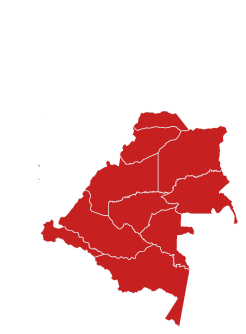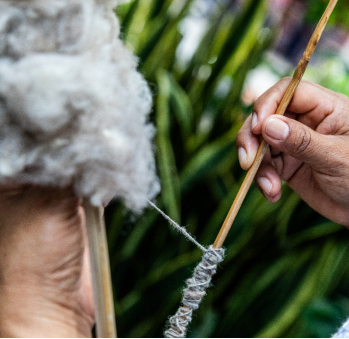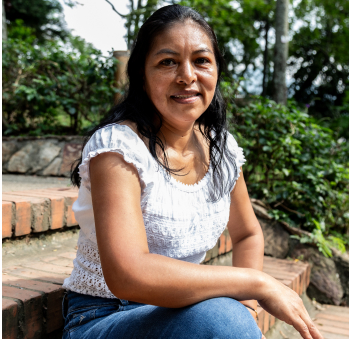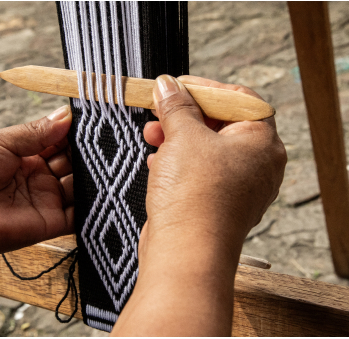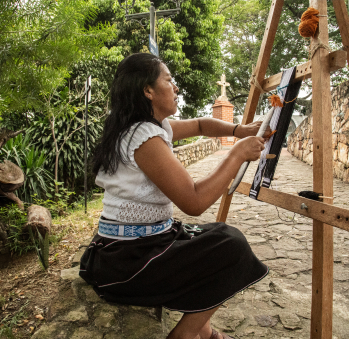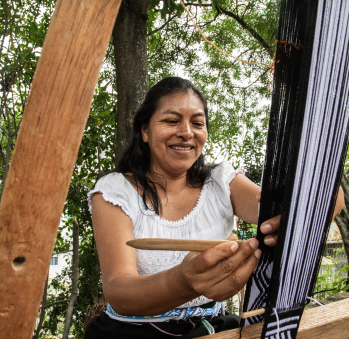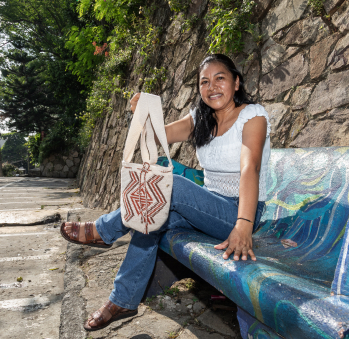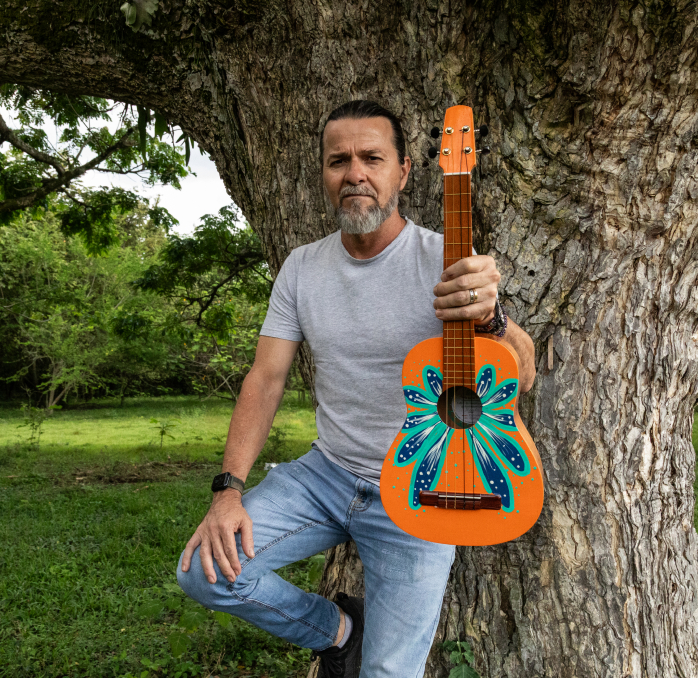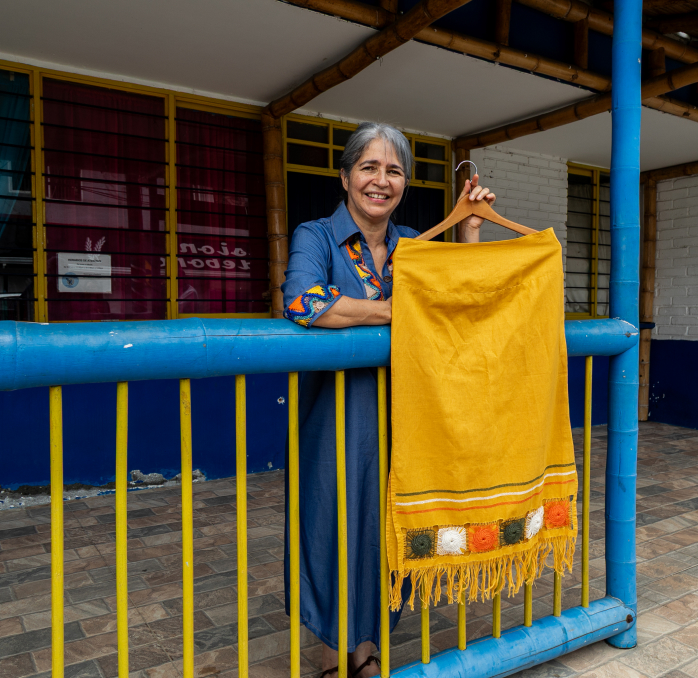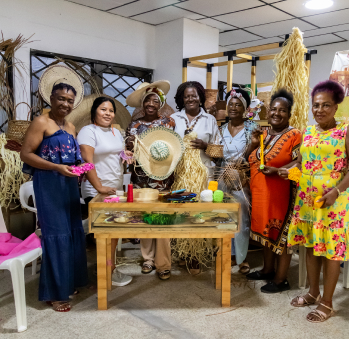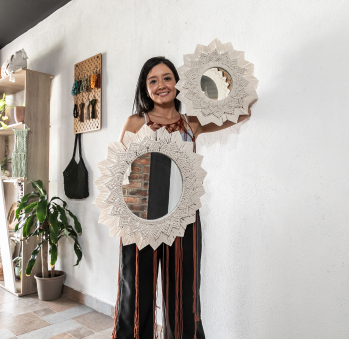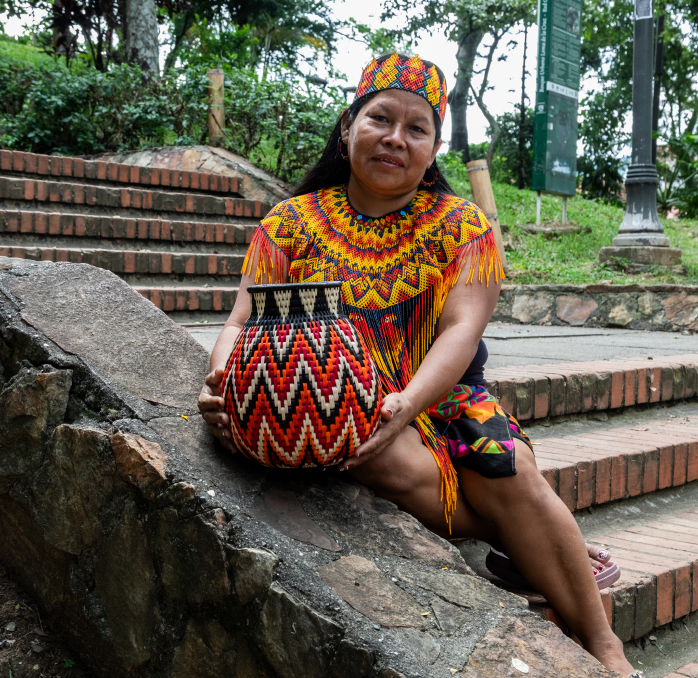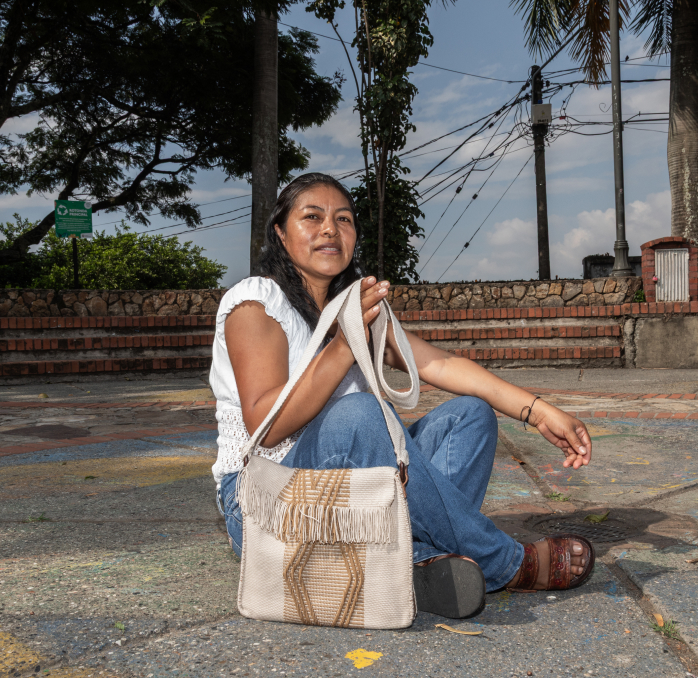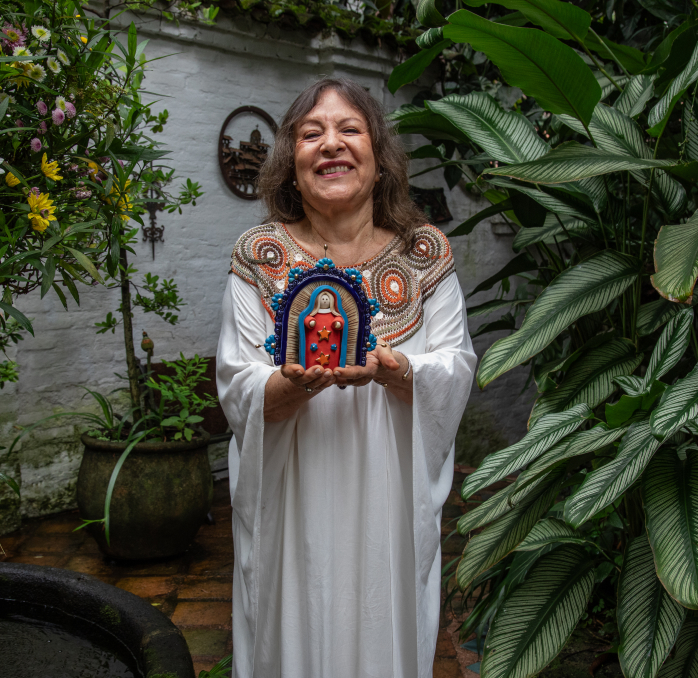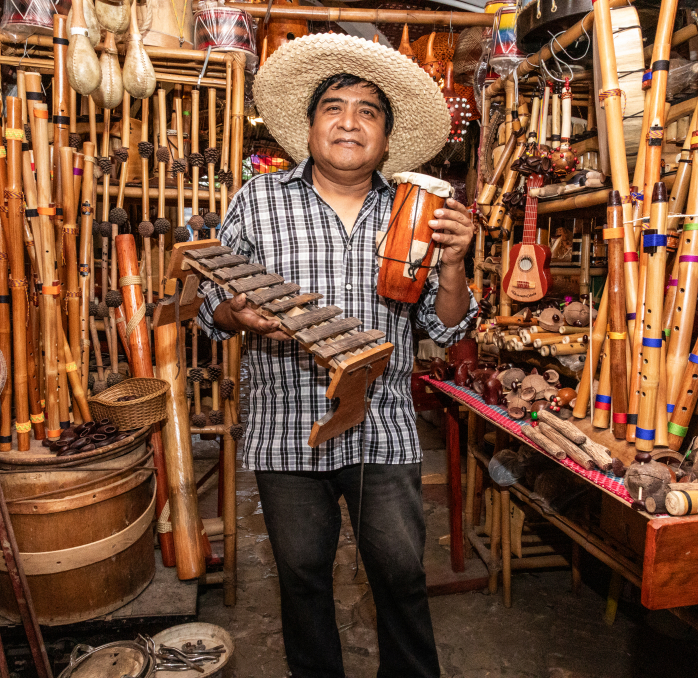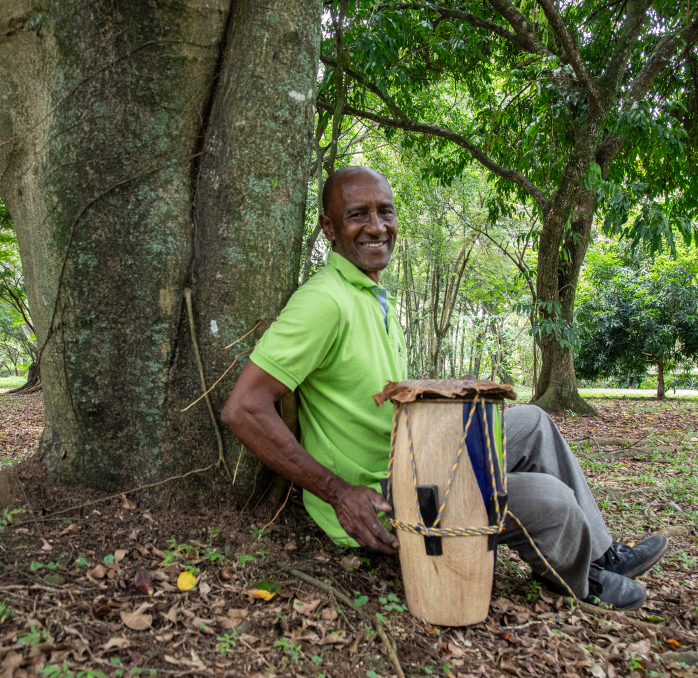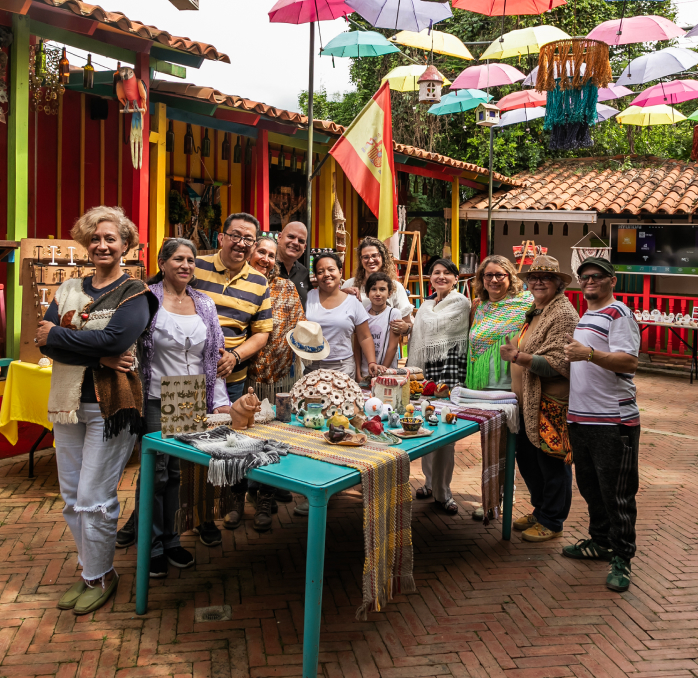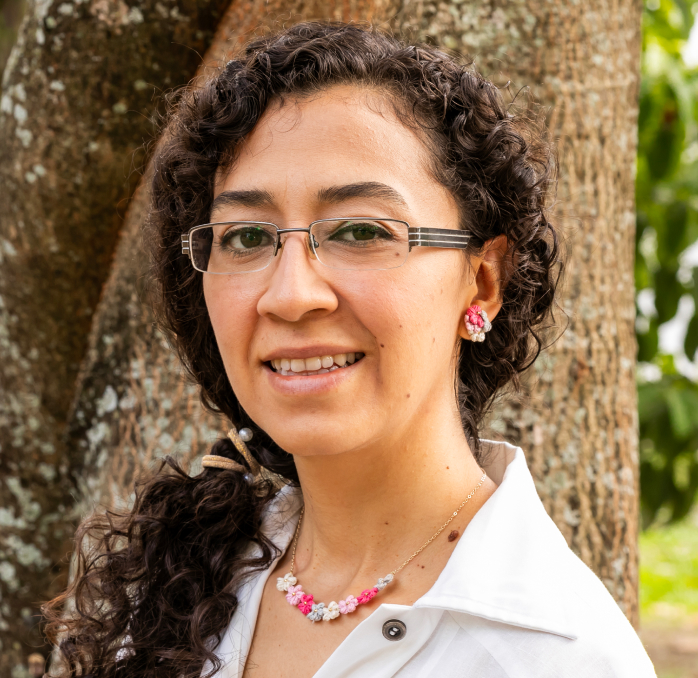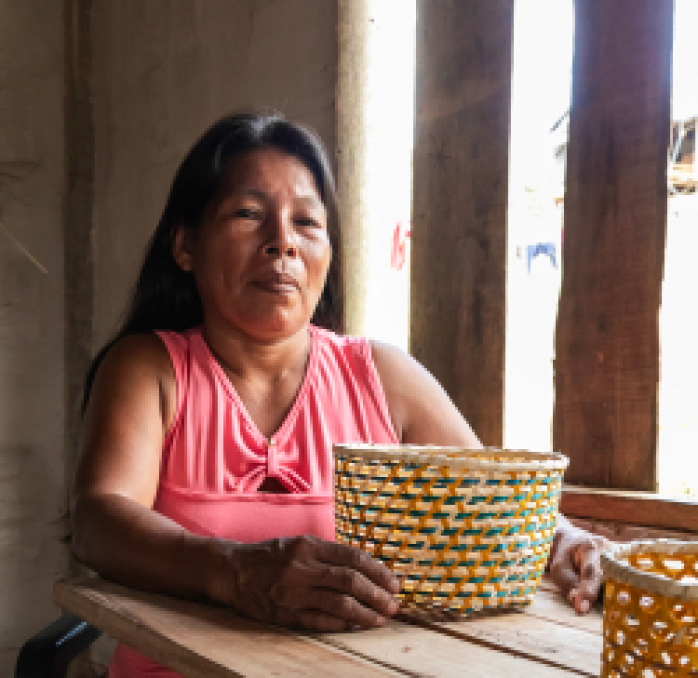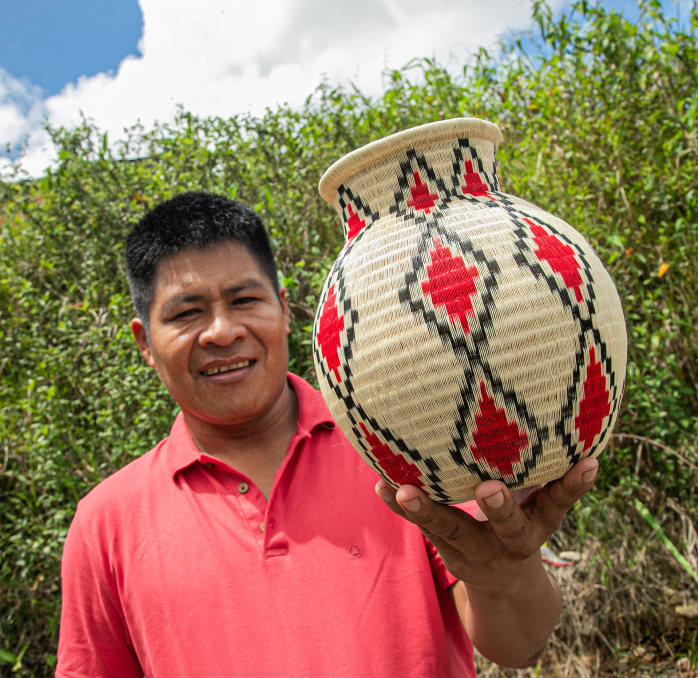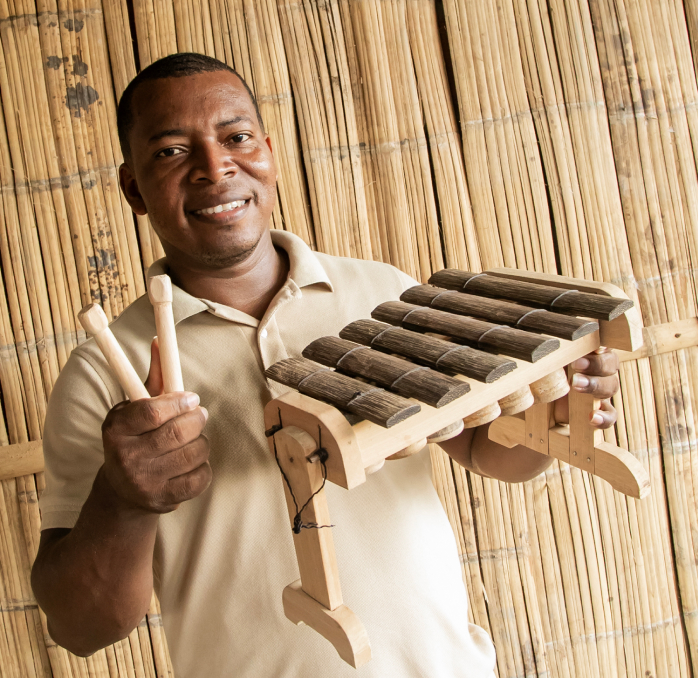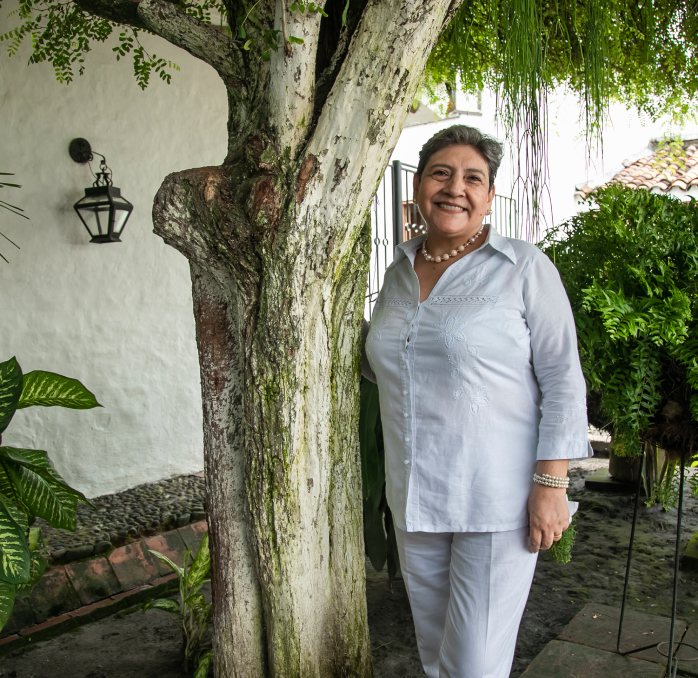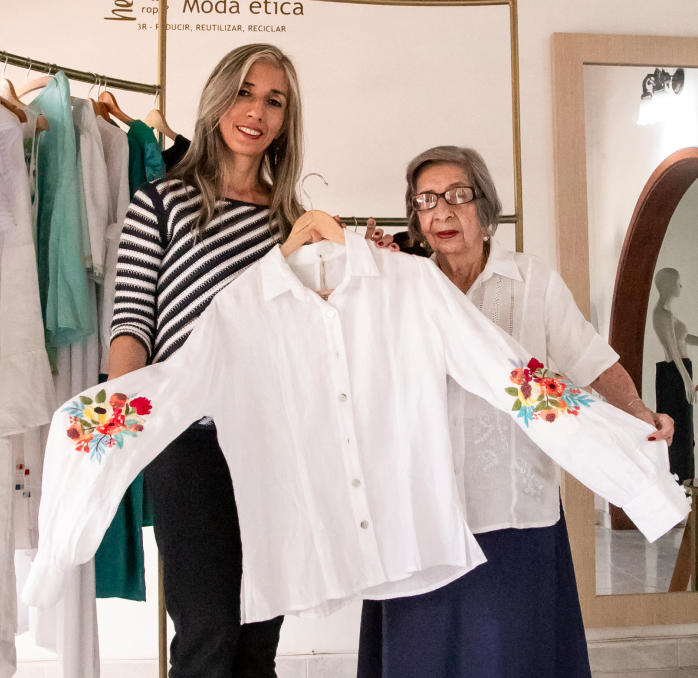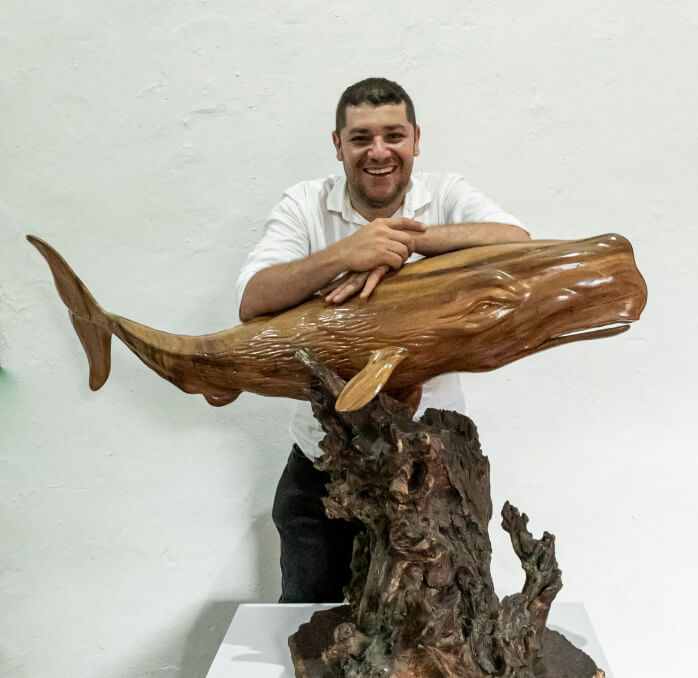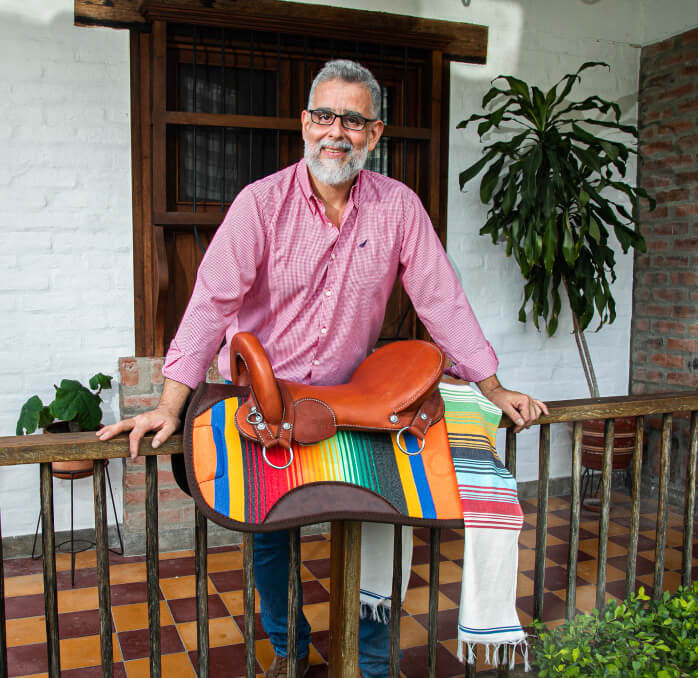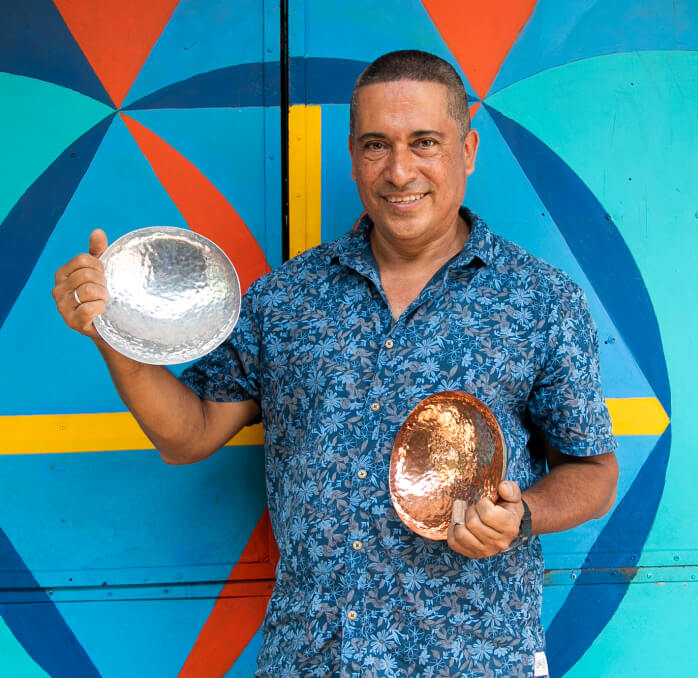María Lucila Peña
Workshop: Tejedoras ancestrales de vida
Craft: Weaving
Trail: Valle del Cauca route
Location: Cali, Valle del Cauca
Weaving found María Lucila again in the city, far from the mountains of her birth and from her native Nasa Yuwe language. It came back to her as a gentle and possible path in the midst of many hardships. It returned to give shape to her unwavering desire to defend her people—an impulse long tied to the widespread perception in Colombia that the Nasa are stubborn and difficult. A perception born, quite simply, from their determination to protect what is theirs. For a long time, María Lucila believed that resistance meant studying law. That’s why it was so painful not to achieve it—at a time when it was rare for Indigenous women to attend university. Now, she sees that the obstacles along the way helped her get to where she is, and she honors her own stubbornness and strength represented in the earthy tones so traditional to Nasa textiles—the same colors found in raw wool and fique.
Before 2010, the idea of forming an association of Nasa women to sell their weavings was revolutionary. Even more so was the idea that a group of women who had come to the city as teenagers to work as domestic laborers could become entrepreneurs and change their lives. María Lucila is just one of many such stories. She arrived in Cali at age 13 to work in the home of Doña María Luisa—who would become her second mother—where her older sister was already employed. She had left the Sath Tama Kiwe Indigenous Reservation in Caldono, Cauca, fleeing violence. She didn’t speak Spanish. She didn’t know how to wash clothes, iron, or serve people. When asked to fetch the cilantro from the fridge for lunch, she didn’t know what the words cilantro or fridge meant. She was struck by the confinement of city life—back home, she only went inside at night, to sleep. She was surprised by having to wait for a traffic light to cross the street, when back home, the land was experienced freely. She cried for months. She doesn’t remember exactly when, but at some point, she learned Spanish. She realized it when she started attending meetings at Taller Abierto, where she could understand what Doña Rosalba—an Afro-Colombian lawyer and leader—was saying about the value of their art, their language, and their worldview. Perhaps it was Rosalba’s example that planted in María Lucila the dream of becoming a lawyer. Thanks to her, they began to see weaving as a tool for transforming their lives—a tool that became all the more vital when, tragically, two women from their territory died in the homes where they worked, and no one gave them an explanation.
In 2009, they arrived at Loma de la Cruz Artisan Park, and more women joined their journey. When they gathered on weekends to weave—something sacred to them—they were around forty. That’s how they began to reclaim what they had learned from a very young age: weaving the jigra, the bag that symbolizes the woman’s womb, the very first thing their mothers taught them to make—starting with cutting the first penca leaf and spinning the fique into fine thread. The jigra is used to carry food from the chagra, the communal garden. They also adapted their traditional loom for city life, adding an extra leg to turn it into a tripod—since, unlike in the countryside, they had no earth in which to anchor the two stakes that would normally hold it steady. As children, they were told to weave without being told why, often at the expense of play. As adults, they were finally able to ask questions and uncover the meanings behind what they did.
This has become one of María Lucila’s greatest passions: to study and understand what she does. That’s why a crucial part of her practice is returning to Cauca regularly to meet with mayoras—the elder women—and learn from them the techniques and symbols that Nasa women have passed down for generations. Like the diamond motif, which speaks to their circular conception of time, and the zigzag, which represents their path. Or the cuetandera, a checkered bag woven only by mayoras, who alone possess the full knowledge of its intricate technique. That same love for learning is matched by her love for teaching. She delights in explaining the meaning of the symbols that her sister so skillfully weaves into chumbes, and in describing her territory. But what she enjoys even more is explaining it there, on her land, showing visitors firsthand what she means. To know her is to be invited to know her homeland—through her own guiding voice and hands.
Craft
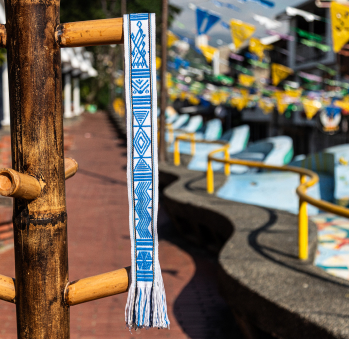
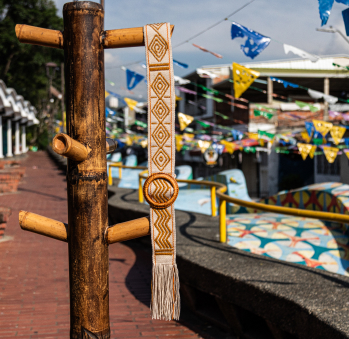
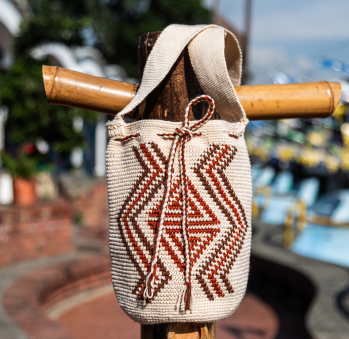
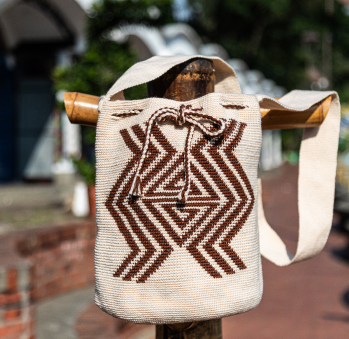
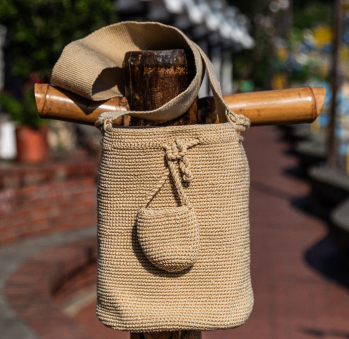
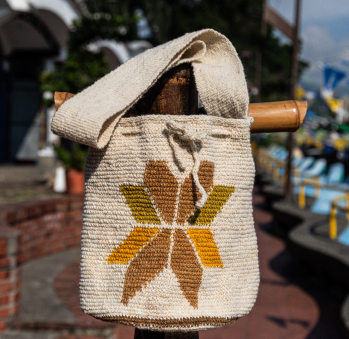
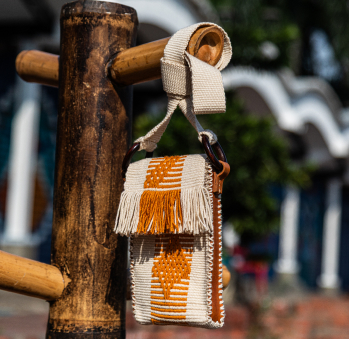
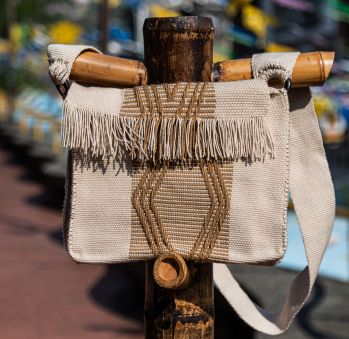
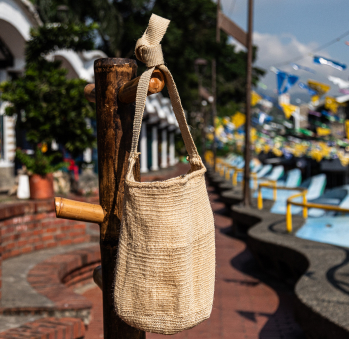









Artisans along the way
Artisans along the way
No puede copiar contenido de esta página

